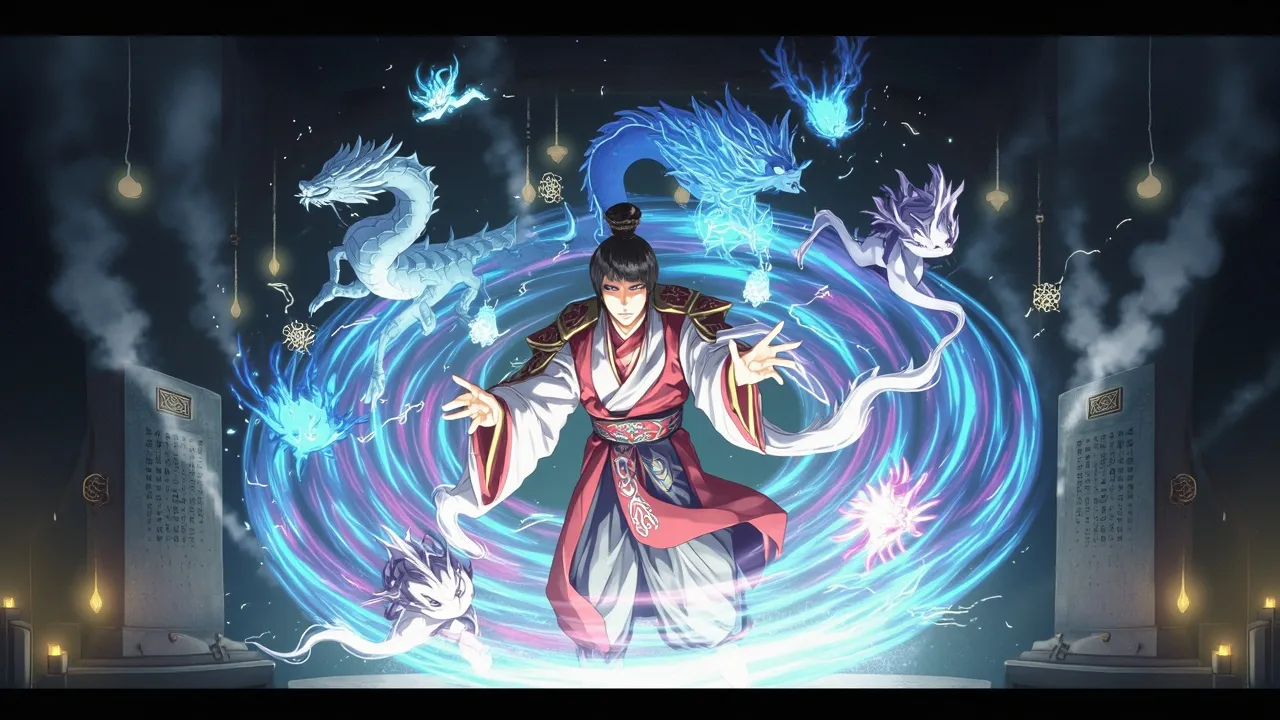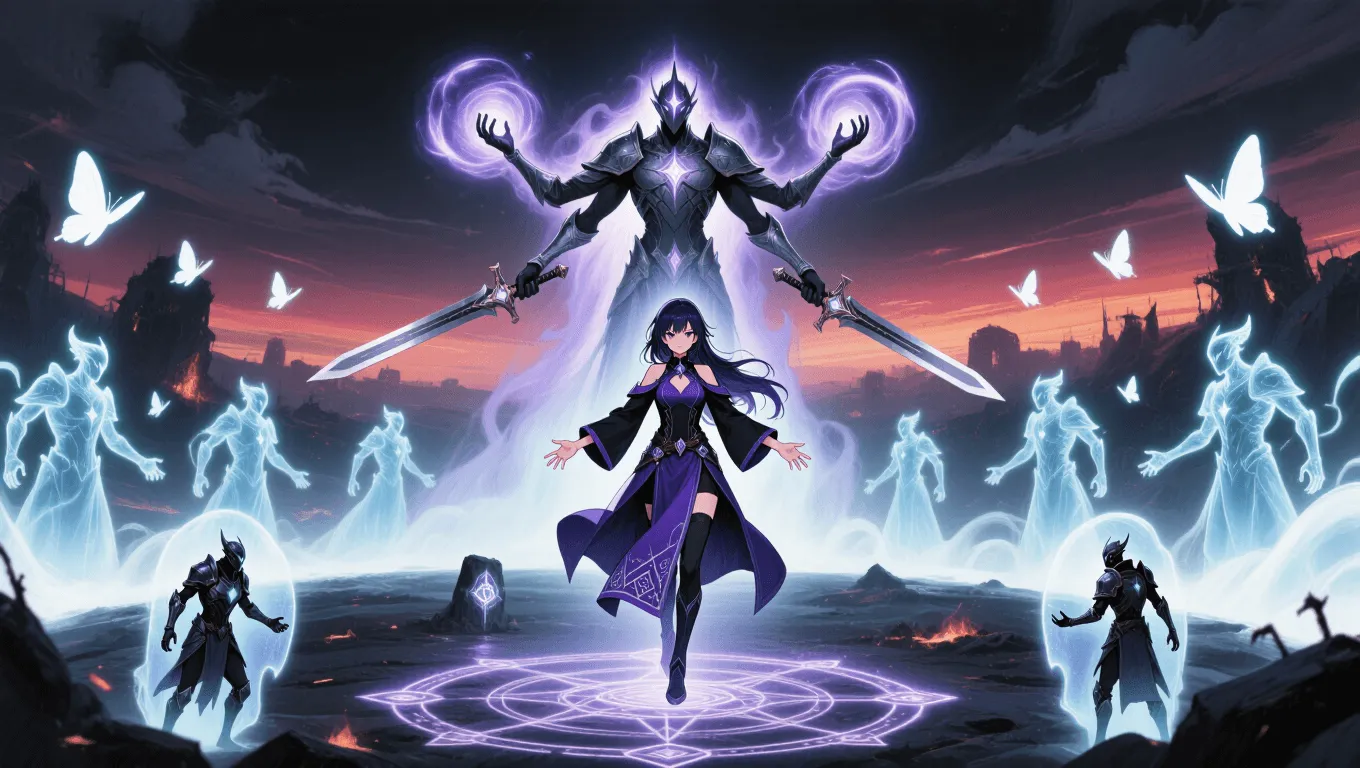Summoning Superpower Explained

Summoning Video Demo 🎬
Table of Contents
Summoning is the superpower of calling beings, objects, or forces from elsewhere into the user’s immediate area. In fiction and RPGs, Summoning often includes spirit summoning, elemental conjuration, and temporary constructs that fight, scout, or support. A skilled summoner can bring allies to the field, enforce contracts, and dismiss threats with banishment. This guide breaks down what Summoning is, how it works in battle, what limits it faces, and which powers pair well with it. For more abilities, browse the full superpower wiki or try a new idea with the random superpower generator.
What Is Summoning
Summoning is the controlled act of calling external entities or matter into the user’s location. These can be living creatures (familiars, spirits, demons, beasts), non-living things (weapons, barriers, tools), or energy constructs (shields, golems, sentient flames). In many settings, Summoning functions through incantations, sigils, or a binding circle. Others frame it as a pure intent-based evocation—the user wills an ally into being. Some variations lean on contract magic, where the summoner bargains with a being and sets rules for service and dismissal.
Common subtypes include:
-
Elemental Summoning: Calling elemental beings (fire, water, air, earth) or elemental constructs (ice walls, stone guardians).
-
Spirit Conjuration: Inviting ancestral spirits, ghosts, or guardians to assist with guidance, reconnaissance, or combat.
-
Beast Taming & Calling: Summoning animals or mythic creatures such as wolves, hawks, or drakes.
-
Demonic or Celestial Evocation: High-risk, high-reward pacts with powerful entities; strict circles and banishment clauses recommended.
-
Object Manifestation: Bringing weapons, tools, or artifacts from a pocket dimension or armory space.
-
Construct Creation: Manifesting temporary minions or barriers made of energy, shadow, light, or crystal.
Summoning differs from teleportation: teleportation moves the user (or a target) from one place to another, while Summoning brings something to the user, often from another plane or stored space.
Core Abilities of Summoning
Conjuration & Manifestation
The baseline skill enables the user to call an entity or object. This may be instantaneous or require a short cast time. Stronger summons demand more focus or resources (mana, stamina, offerings).
Binding & Control
Many summons arrive with their own will. Binding establishes obedience and limits. Control can be continuous (real-time commands) or autonomous (assign an order and let the summon act on its own).
Contract Magic
Some summoners form pacts for reliability: the entity agrees to serve under set terms—duration, task scope, payment, and dismissal. Contracts reduce risk of betrayal and allow faster, ritual-free recalls later.
Banishment & Dismissal
The flip side of calling is cleanly sending the summoned back. Banishment counters hostile summons and protects allies when a conjuration behaves unpredictably. Dismissal ends the resource drain and prevents collateral damage.
Multi-Summon Management
Advanced summoners maintain several entities at once. This requires mental bandwidth—juggling inputs, positioning, and tactics like a small squad commander.
Pocket Realms & Gateways
High-level users create holding spaces (pocket dimensions) for their arsenal and open portals to pull out what they need. Gateways can also allow short-term reinforcements to pass through as a wave.
Summoned Enhancements
Some summons infuse the user with boons—temporary armor, elemental resistance, healing wisps, or amplified perception through a familiar’s senses.
Application / Tactical Advantages in Combat
Force Multiplication
Summons add bodies, tools, and pressure. This turns a duel into a skirmish the summoner dictates, overwhelming foes with numbers, angles, and varied damage types.
Zone Control
Conjured walls, vines, or ice fields reshape the battlefield—funneling enemies, blocking escapes, protecting allies, and locking down objectives.
Information Superiority
Scouting spirits, familiars, or micro-constructs provide reconnaissance, early warnings, and target marking. Shared senses let the summoner “see” around corners and through fog.
Flexibility & Counter-Picking
With a broad stable of allies, a summoner counters threats on the fly—fire elementals against frost foes, iron constructs against spectral enemies, or sanctified guardians against infernals.
Attrition Advantage
Well-managed summons absorb damage that would otherwise hit the user or the team. Even if a summon falls, it buys time to reposition or complete an objective.
Support & Sustain
Healing sprites, shield constructs, and mana-channeling familiars keep the team fighting longer, enabling endurance wins against burst-heavy opponents.
Level: Power Progression
Level 1 🏙️ — Novice Summoner

-
Scope: One small or moderate summon at a time; short duration.
-
Methods: Simple incantations, chalk circles, or a focus item (talisman).
-
Utility: Recon familiar, minor elemental (ember wisp, water sprite), or a single conjured weapon/tool.
-
Limits: Short control range, cooldowns after dismissal, and fragile summons that require protection.
Level 2 🌇 — Adept Conjurer

-
Scope: Multiple concurrent summons or one major entity.
-
Methods: Contract magic with common spirits; refined sigils for faster cast times.
-
Utility: Combat-ready guardians, movable barriers, autonomous scouting swarms, healing or shielding support.
-
Tactics: Real-time micro-management, crossfire setups, and zone denial.
-
Limits: High stamina or mana cost under sustained pressure; risk of backlash if a binding weakens.
Level 3 🌃 — Master Evoker

-
Scope: Squads of specialized summons, large constructs, or elite pact-bound entities.
-
Methods: Pocket realm armories, stable gateways, layered contracts with contingency clauses.
-
Utility: Battlefield reconfiguration (terrain-altering constructs), strategic banshees for morale shock, and emergency mass banishment.
-
Tactics: Orchestrates multi-lane assaults, rotates units for cooldowns, and stacks buffs/debuffs for decisive tempo swings.
-
Limits: Catastrophic consequences if a top-tier summon breaks its pact; heavy resource drain; complex prep.
Limitations of Using the Summoning Superpower
-
Resource Dependency: Mana, stamina, offerings, or focus items limit frequency and duration. Overcasting leads to fatigue, miscasts, or failed bindings.
-
Preparation Time: Strong summons often need circles, sigils, or ritual steps. In surprise encounters, the user may rely on weaker quick-casts.
-
Control Bandwidth: Each active summon consumes attention. Split-second decisions become harder with more units, risking friendly fire or lost opportunities.
-
Range & Tether: Many summons cannot stray far from the user or the binding anchor. If the user is displaced, the conjuration may weaken or vanish.
-
Environmental Interference: Anti-magic fields, sanctified grounds, or opposing sigils can disrupt conjuration or strip control rights.
-
Sentient Resistance: Intelligent entities may negotiate, twist wording, or exploit loopholes. Poorly drafted contracts invite betrayal.
-
Backlash & Contagion: Failed banishment can allow a hostile entity to “stick,” spread corruption, or mark the summoner for future harassment.
-
Visibility & Collateral: Large constructs and portals are obvious. They attract attention and can damage surroundings in crowded areas.
Weakness Against What Other Superpowers
-
Nullification & Anti-Magic: Direct counters that sever bindings, erase circles, or suppress portals immediately remove summons from play.
-
Mind Control / Domination: If a summon’s will is hijacked, it can be turned against the summoner. Contract clauses help, but not always.
-
Sealing & Binding Arts: Specialists can seal portals, bind the summoned to the ground, or re-route command priority to themselves.
-
Speedsters & Teleporters: Extremely fast foes bypass summoned screens to strike the summoner—the true weak point—before commands can adapt.
-
Sound/Resonance Disruption: Sonic scream or frequency-based powers can scramble incantations and destabilize delicate sigils mid-cast.
-
Exorcism & Purification: Holy or sanctified powers banish infernal or spectral summons with reduced effort, undercutting infernal/corrupt builds.
-
Environmental Denial: Vacuum, deep water, or extreme temperatures can incapacitate certain elementals or constructs that rely on a medium.
Synergistic Power Combos
-
Warding & Circlecraft: Protective wards keep portals stable and summons obedient. Circlecraft also accelerates casting and reduces resource drain.
-
Telekinesis: Perfect for repositioning summons, throwing constructs, or holding a hostile entity still for binding.
-
Illusion Casting: Illusory terrain and duplicate targets make it easier to flank and confuse enemies while the summons land real hits.
-
Time Dilation: Slowing enemies amplifies summon damage and control. Even brief time windows let multi-summon tactics overwhelm opponents.
-
Elemental Manipulation: Pairing Summoning with fire, ice, or earth shaping buffs elemental allies and enables advanced combo fields (e.g., ice walls plus stone golems).
-
Healing / Regeneration: Sustain for both user and summons extends battlefield presence and reduces downtime between casts.
-
Portal Creation: Separate from Summoning, portals enable logistics—evacuation, re-supply from a pocket armory, or rapid redeployment of summoned squads.
Known Users
-
Zatanna Zatara (DC Comics): A stage-magician superhero who performs reality-bending spells—often including conjuration—via backward speech. Her blend of control, banishment, and utility mirrors advanced Summoning builds. Learn more about Zatanna.
-
John Constantine (DC/Vertigo): An occult tactician whose pacts, bindings, and risky bargains exemplify contract-based conjuration. Learn more about John Constantine.
-
Doctor Strange (Marvel Comics): The Sorcerer Supreme employs portals, bindings, and conjured entities, reflecting high-level evocation and dismissal mastery. Learn more about Doctor Strange.
-
Yoh Asakura (Shaman King): A shaman who partners with a guardian spirit, showcasing pact synergy and spirit summoning in combat. Learn more about Yoh Asakura.
For more powers to compare with Summoning or to build a character, visit the superpower wiki and spin up ideas with the random superpower generator.
